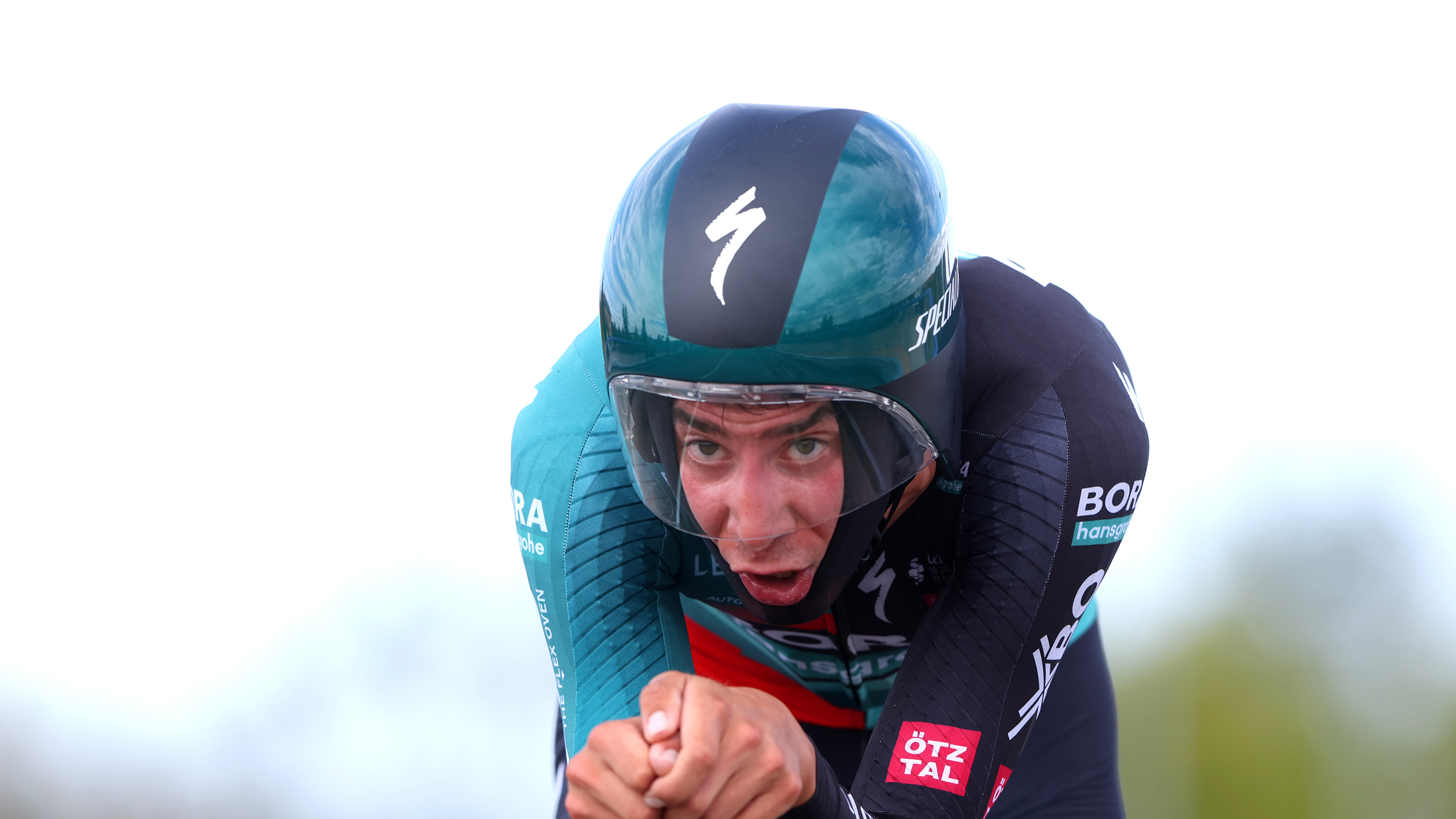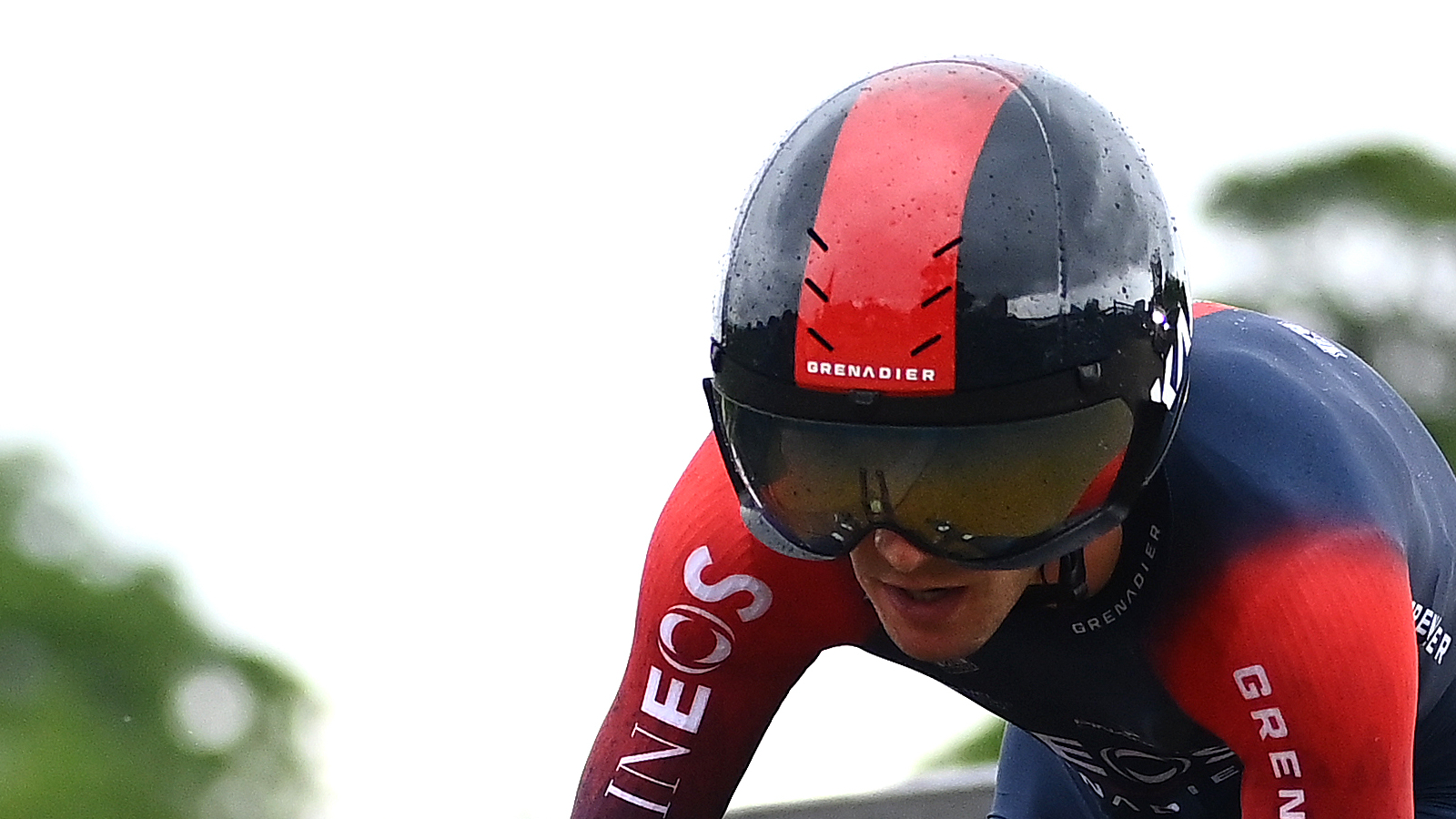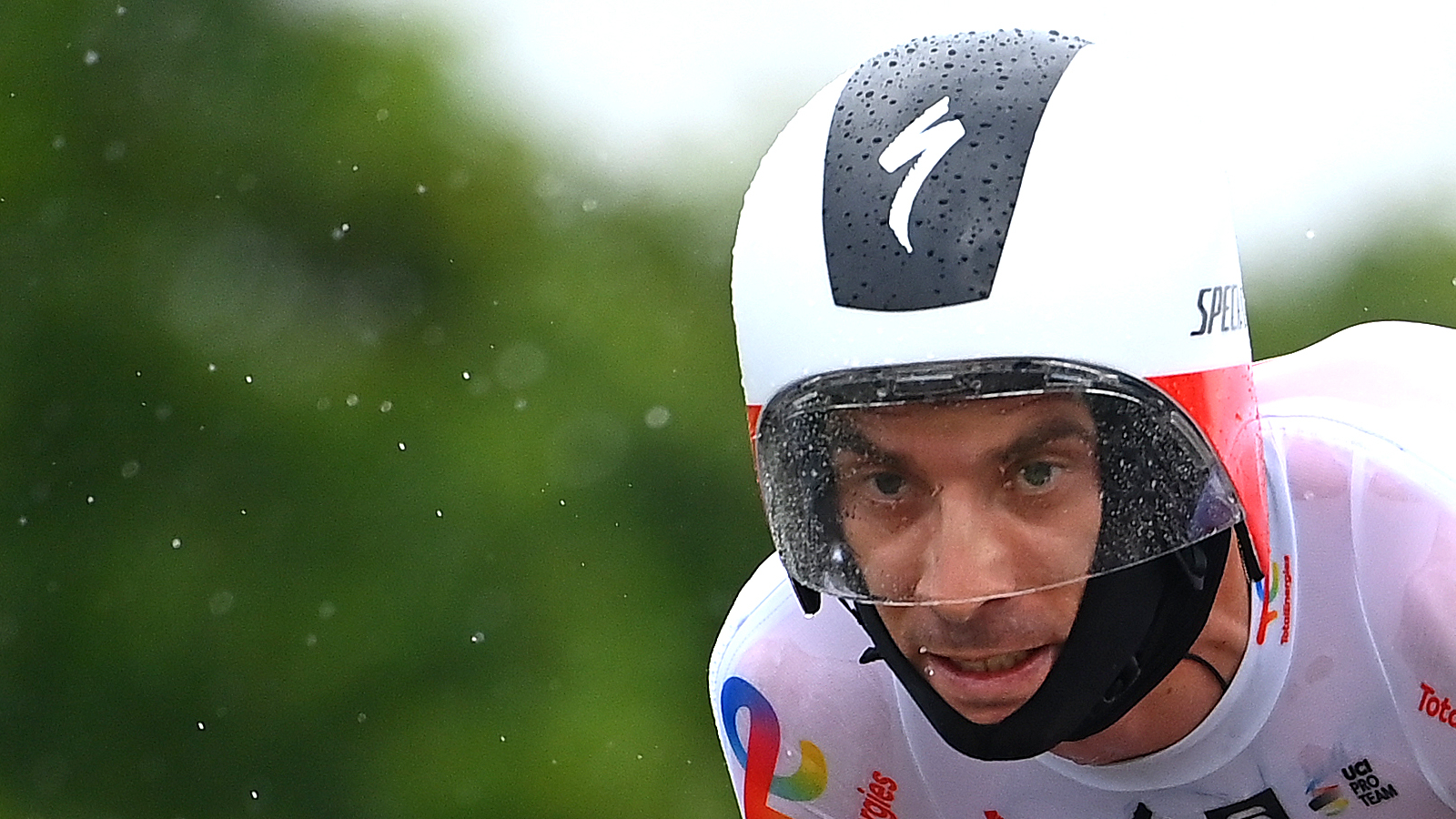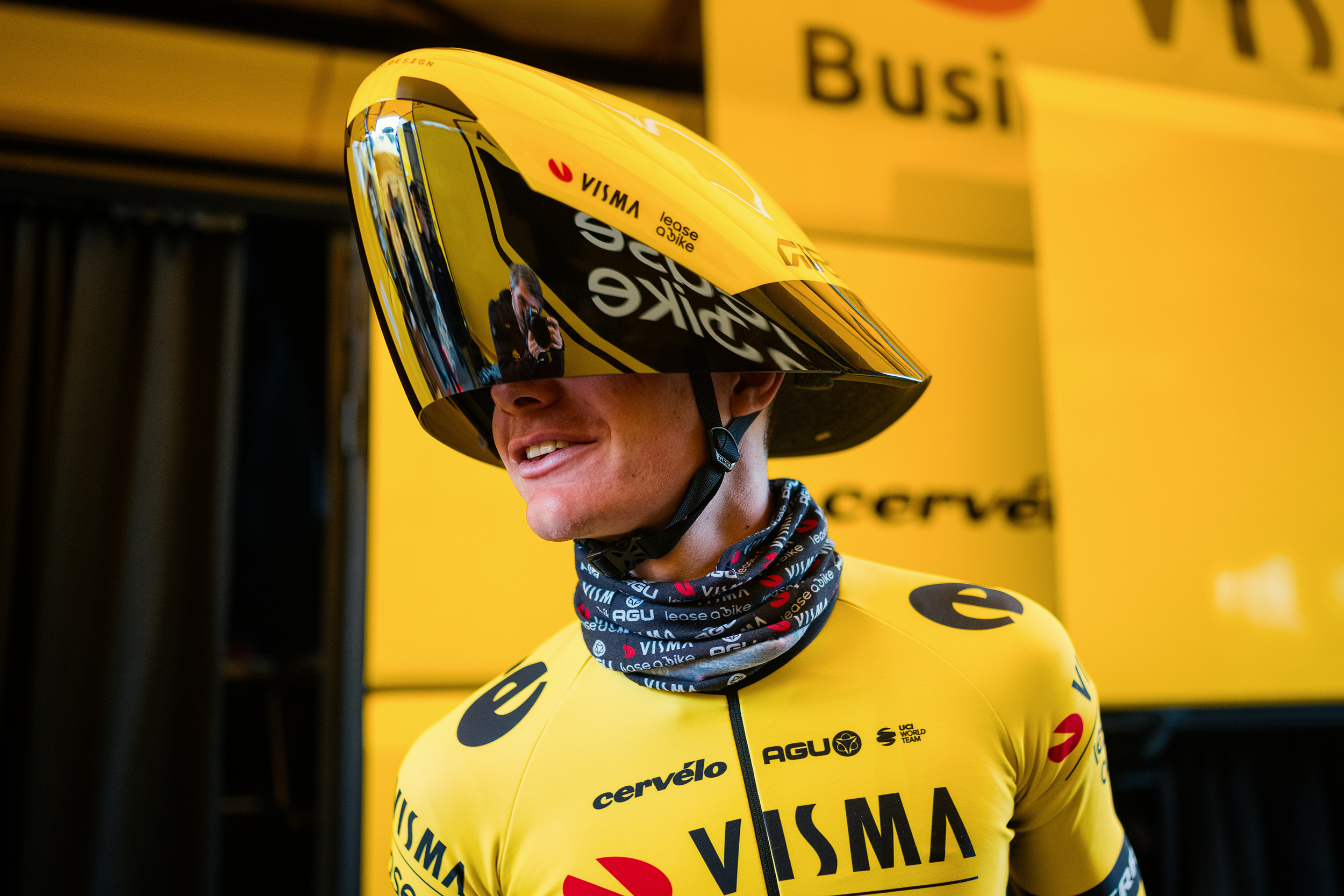
Just hours after Team Visma-Lease a Bike broke the internet with the unveiling of the beyond-wild Giro Aerohead II time trial helmet, the UCI has issued a statement, announcing it will carry out an "in-depth analysis" of its rules governing time trial helmet design.
Within the statement, it announced it is banning the 'Head Sock' which features inside Specialized's TT5 helmet, first shown at the 2022 Tour de France and used regularly by sponsored riders since.
Over recent years, time trial helmets have gotten weirder. They're bigger, wider, and more bulbous than ever as engineers and aerodynamicists attempt to push the boundaries of the rulebook to find free speed.
That culminated in Giro unveiling a helmet with a huge protruding leading edge, sitting some 20cm higher than the wearer's head, while shrouding the rider's shoulders, essentially pushing air smoothly around the rider's body. It's a technique that other brands have employed, too. For example, the Sweet Protection Redeemer 2Vi, which is used by Uno-X Pro Cycling, and the POC Tempor, used by multiple teams. Elsewhere, Ineos Grenadiers, who use the less radical Kask Bambino Pro, have been known to upsize their helmet - essentially wearing one that's a few sizes too big - to achieve a similar effect, while adding wind deflectors to the lens.

The UCI's statement, which bears the title 'The UCI to carry out an in-depth analysis of the regulations governing the design and use of time trial helmets,' begins by saying that "the constant quest for improved performance and ever-increasing attention given to detail is leading professional teams and equipment manufacturers to develop their equipment more often and with ever more radical designs."

Evidently, this process was already underway before the social media storm that surrounded the Visma-Lease a Bike team on the opening stage of Tirreno Adriatico, as the statement continues to say that the UCI has already Specialized that it had undertaken a review of its latest helmet.
"After conducting a thorough process, which included consultation with Specialized, as well as examination of documentation linked to the helmet’s certification, safety instructions, and information from public sources, it was concluded that the Head Sock is a “non-essential” component (article 1.3.033 of the UCI Regulations).
"As a result, the Head Sock integrated into the TT5 helmet will no longer be permitted for use at events on the UCI International Calendar, effective from 2 April, 2024."
Specialized responds
Cyclingnews reached out to Specialized for comment on the matter, and the brand expressed disappointment in the decision, which comes more than a year and a half after the product's first use, and which ultimately undoes months, if not years, of research and development.
"After 18 months of racing, the UCI has informed us of their decision to ban the head sock feature that is manufactured on the current TT5. Specialized is disappointed in this decision as it greatly impacts our riders and teams that have spent a significant amount of time preparing with the equipment that was UCI approved. We’ll continue pushing the boundaries of innovation to support our athletes with the highest performing product possible.”

"The primary function of a helmet"
The statement then turns its attention to the Giro helmet at the centre of the Visma Lease a Bike furore; the Rudy Project Windgream HL 85, which went comparatively under the radar on the heads of Bahrain Victorious riders; and the similarly radical POC Tempor. One presumes it will also encompass the aforementioned Sweet Protection Redeemer helmet too, although this model isn't explicitly named in the statement.
"The UCI acknowledges that while this may not directly contravene existing UCI Regulations, it raises a significant issue concerning the current and wider trend in time trial helmet design, which focuses more on performance than the primary function of a helmet, namely to ensure the safety of the wearer in the event of a fall.
"In view of the evolution of these situations as well as other problems encountered in recent years, in relation to the requirement for commercial availability, the ban on non-essential components and the shape and size of time trial helmets, the UCI will undertake a review of its rules on the design and use of helmets in competition.
"By doing so, it wishes to ensure that they set a clear framework that is consistent with the objectives targeted. Any modification to these rules will be communicated rapidly after its adoption by the competent UCI bodies."







